This week, we came to to end of our ‘Rocks and Soils‘ mini topic. For our final two lessons, we studied the job of an archaeologist and had our very own archaeological dig.
Our first lesson focused on generating, developing and communicating our ideas through discussion.
In groups, on large paper, children were asked to answer the questions through discussion, make notes and annotations.
- What is an archaeologist?
- What is their job? What skills do you think they need?
- Is the job of an archaeologist important? Why?
- What tools are needed for this job?
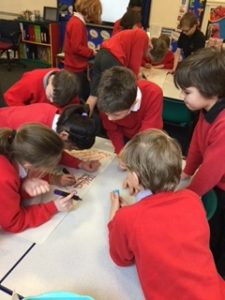
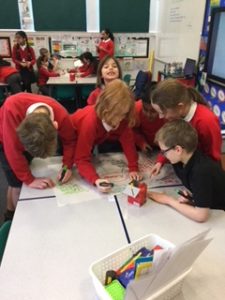
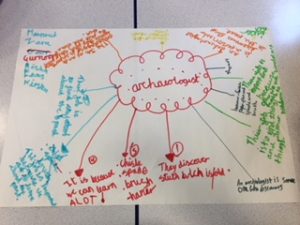
The children were given sentence stems to use. This helps to evidence and back-up their ideas and reasons. For example:
- I think that an archaeologist would have to be good at maths. I think this because they would have to know about dates and times from different ages.
- If we don’t have evidence from the past, then we won’t be able to learn more about history.
For the next lesson things got MESSY! We had previously learnt that archaeologists find out about the past by discovering artefacts left behind by our ancestors, examining what they have found and then recording their discoveries for the future. With all this in mind, the children were asked to select appropriate tools for their excavation. Year 4 were able to choose suitable tools and give reasons as to why they select them.
- “You need to be very careful not to damage your fossil or artefact,” said Henry.
- “I think that a cotton bud would be useful to get into tiny areas,” commented Zara.
A container with layers of rock and sand was given to each group. The children then had to work carefully by removing tiny pieces of rock or layers of sand.
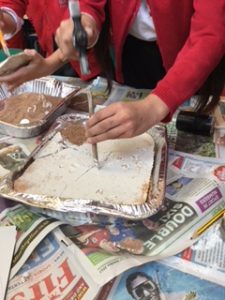
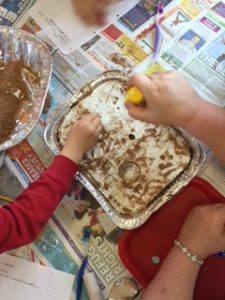 We excavated in layers rather than digging holes as this is how a real archaeologist works. When an artefact or fossil had been uncovered, the groups had to carefully clear the sand and rock from around the edges avoiding damage to the surface of the artefact itself.
We excavated in layers rather than digging holes as this is how a real archaeologist works. When an artefact or fossil had been uncovered, the groups had to carefully clear the sand and rock from around the edges avoiding damage to the surface of the artefact itself.

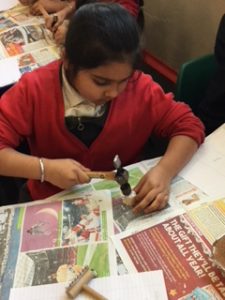
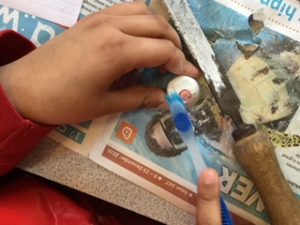
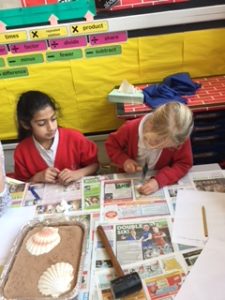
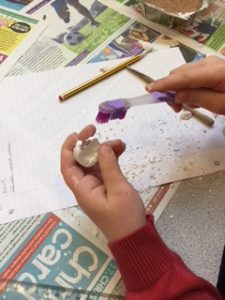
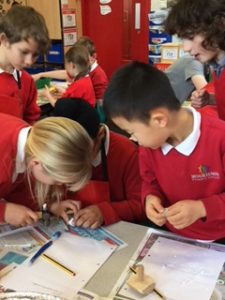
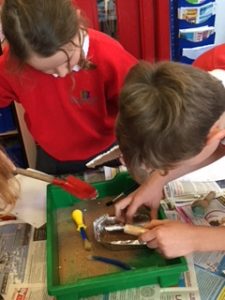
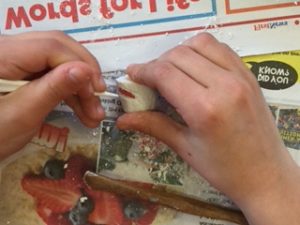
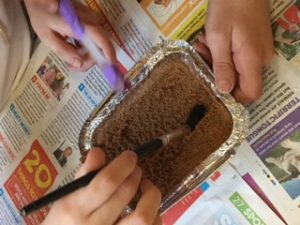
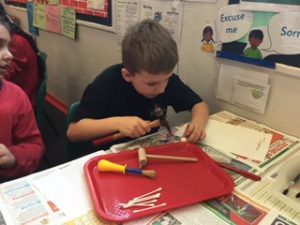
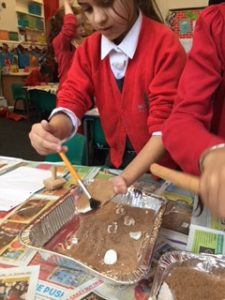
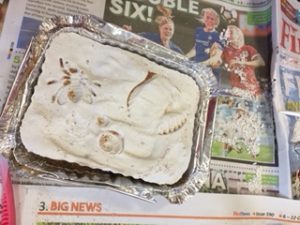
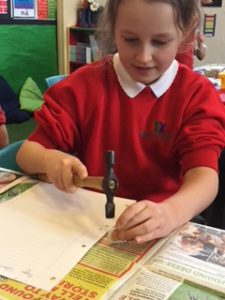
After excavating in layers, the children had to make notes about each find until they reached the bottom of their container.
Once the dig had been completed, we looked at our finds and compared the details of each artefact or fossil.
We discussed things that were hard or challenging.
“I found it hard to get the fossil out in one piece. It was easier to leave room around it and then try to chip at the rock carefully,” commented Arundeep. 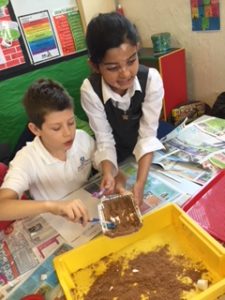
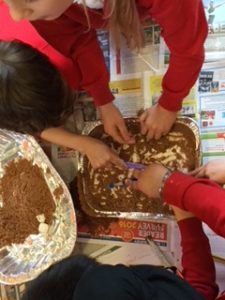
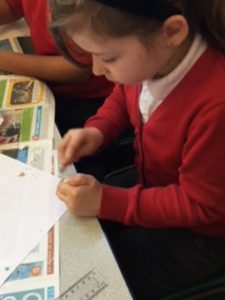
Following a very successful dig, the children were asked to create a fact file for one of their finds.
The children examined their objects using a magnifying glass, measured the dimensions, sketched the find and recorded texture and appearance. In order to get an idea of the scale, we took photos of the objects alongside a ruler.

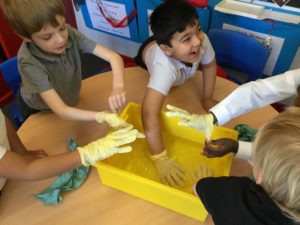
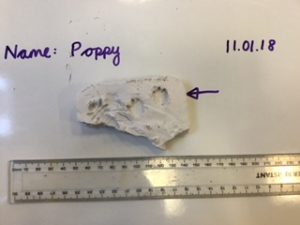
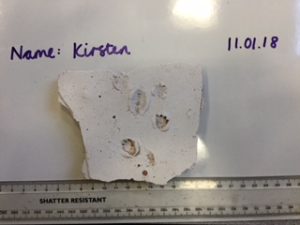
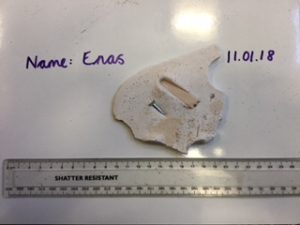
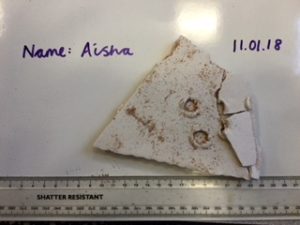
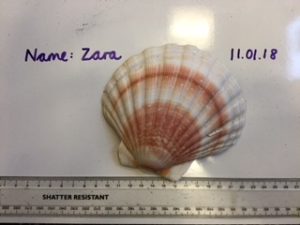


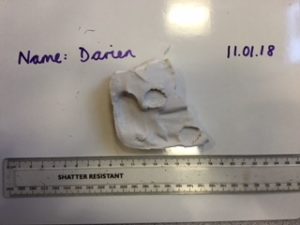
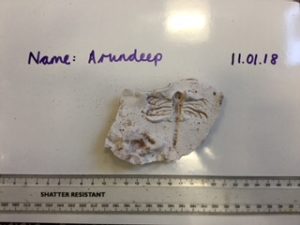
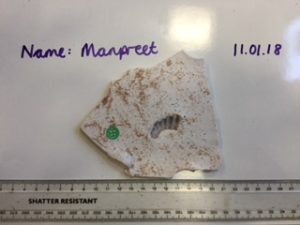
Well done to Year 4. They worked with patience and care. We all enjoyed these lessons. In fact, we have decided to make our class assembly a ‘Rocks and Soils’ themed one – YEAR 4 ROCK!
We’ll be performing this on Wednesday 17 January. We look forward to seeing you there!